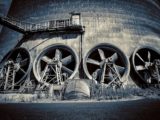The Mysterious Starburst Galaxy: A Haven for Stellar Birth and Death
Deep in the vast expanse of intergalactic space lies a galaxy so fascinating, it’s hard to resist its gravitational pull. The starburst galaxy is an astronomical phenomenon that has captivated scientists and astronomers for decades, offering unparalleled insights into the formation and evolution https://starburstgalaxy-game.com/ of stars within our universe. Located about 12 million light-years from Earth in the constellation Cepheus, this majestic celestial body is a treasure trove of cosmic wonders waiting to be explored.
Unraveling the Mysteries of Star Formation
The starburst galaxy’s primary characteristic is its remarkable rate of star formation, which far exceeds that of our own Milky Way. This intense process results in massive stars being born at an incredible pace, fueling a vibrant tapestry of stellar life and death. Astronomers have long been fascinated by the starburst galaxy’s capacity to produce new stars with such rapidity, sparking debate about its internal dynamics and environmental influences.
Research suggests that galactic mergers may trigger these intense episodes of star formation. When two galaxies collide, they release enormous amounts of energy in the form of shock waves that compress gas within their central regions. This compression can lead to a sudden surge in star birth as compressed clouds collapse under gravity’s relentless pull. However, other theories propose that environmental factors like gas inflow or outflow from the galaxy may also contribute to this phenomenon.
The Cosmic Dance: Interplay between Gas and Dust
One of the most striking features of the starburst galaxy is its exceptional ability to convert gas into stars. Observations reveal a high concentration of dense, cold molecular clouds rich in carbon monoxide (CO), essential precursors for stellar birth. As gas flows towards the galactic center, it becomes increasingly compressed, forming massive young stars that sculpt their surroundings through intense radiation and powerful winds.
As these stars forge ahead, they inject heavy elements forged within their cores back into the interstellar medium. These chemical elements become incorporated into subsequent star-forming regions, enriching the surrounding gas with essential building blocks for life as we know it. This process, known as galactic chemical evolution, paints a complex picture of stellar interactions and their lasting impact on galaxy-scale processes.
A Realm of Stellar Life Cycles: The Birth and Death of Stars
The starburst galaxy is an unparalleled laboratory for studying the lifecycle of stars. At its heart lies a sprawling central bulge comprised primarily of old, red supergiants that have exhausted their nuclear fuel. These ancient behemoths are nearing the end of their lives as they expand to become red giants or shed their outer layers in supernova explosions.
To one side lies an expansive disk hosting a tapestry of star-forming regions where nascent stars light up the surrounding gas with intense radiation. Within these nebulae, astronomers have discovered hundreds of protostellar jets and outflows – energetic flows of matter ejected from young stars as they clear their surroundings of gas and dust.
The starburst galaxy’s stellar ecosystem thus showcases a beautiful interplay between creation and destruction. On one hand, the birth of new stars injects fresh energy into the interstellar medium, rejuvenating galaxies over cosmic timescales. Conversely, the death of massive stars disperses heavy elements forged within their cores back into space, enriching future star-forming regions.
Unlocking Secrets: Advanced Astronomical Techniques
As scientists continue to unravel the enigmas surrounding starburst galaxies, sophisticated observational tools and computer simulations have become essential in shedding new light on these celestial bodies. One of the most powerful techniques employed is spectroscopy – the analysis of an object’s spectrum (or distribution of intensity vs. wavelength) to determine its composition, motion, or other properties.
In addition to studying specific stars within star-forming regions, astronomers use spectrometers to analyze the entire galaxy as a whole. This method provides valuable insights into galactic-scale processes like gas inflows and outflows, magnetic field strengths, and even the presence of dark matter. Furthermore, supercomputer simulations have enabled researchers to model complex phenomena such as turbulent flows and star-forming regions in unprecedented detail.
Cosmic Implications: The Starburst Galaxy’s Role in Our Universe
The study of starburst galaxies holds profound implications for our understanding of cosmic evolution. By observing the stellar life cycles within these galaxies, scientists can gain insights into the formation of heavy elements, the birth of planetary systems, and even the development of complex life forms.
Moreover, the observation that galactic interactions may trigger intense episodes of star formation raises questions about the role of environment in driving galaxy-scale processes. Are collisions and mergers responsible for shaping our own Milky Way’s evolution? How do these events influence the structure of galaxies across various scales?
A Glimpse into the Future: Unveiling the Mysteries Ahead
As scientists continue to probe the starburst galaxy, new discoveries promise to reveal even more about this enigmatic celestial body. Next-generation telescopes and advanced computer simulations will undoubtedly allow researchers to penetrate deeper into its inner workings, illuminating hitherto unknown processes.
Moreover, ongoing studies of similar galaxies in various stages of evolution will provide a broader understanding of the complex interplay between gas, dust, and stars within these cosmic laboratories. The starburst galaxy remains an awe-inspiring reminder of our universe’s majesty, fueling scientists’ curiosity as they strive to unravel its mysteries – one star at a time.
Conclusion
The starburst galaxy stands as an eternal testament to the cosmic dance between creation and destruction. Within its swirling vortex lies an intricate tapestry of stellar life cycles, shedding new light on fundamental processes governing the evolution of our universe. As scientists continue their journey into this extraordinary celestial body, they will undoubtedly uncover even more secrets about the formation and fate of galaxies across cosmic scales.
As we gaze up at the night sky in wonder, the starburst galaxy reminds us that there is still so much to be discovered – waiting like an unfurled cloak of mystery for those brave enough to venture into its vast expanse.



